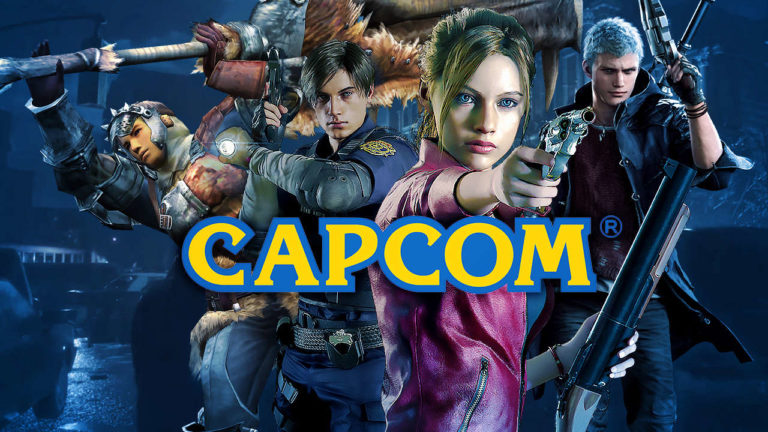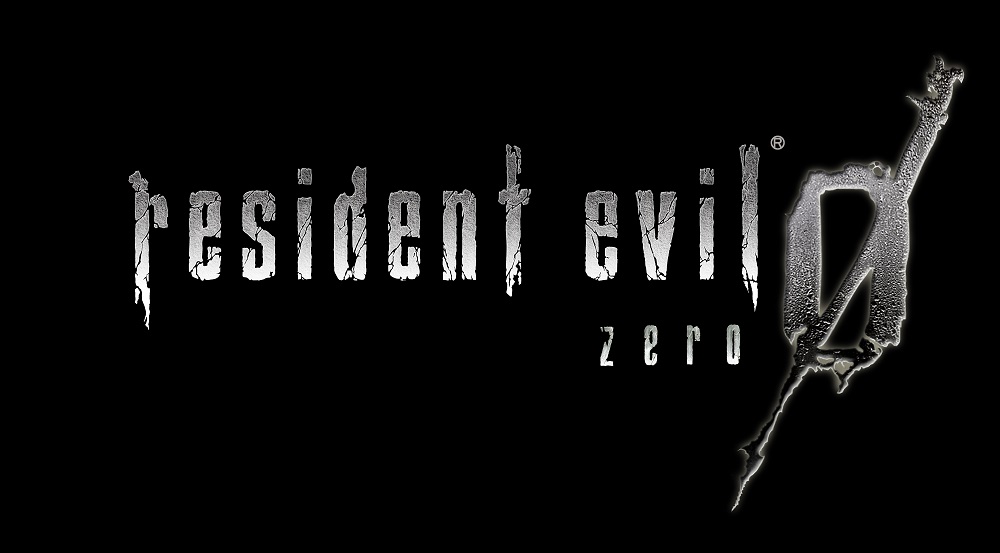
When Resident Evil REmaster came out last year, I was overjoyed. First of all, it was the game’s first appearance off of a Nintendo console, and second it was wonderful to have such a sharp, crisp HD version of one of the best games of the 6th generation of consoles. By and large, it was basically just the same game, but with a new coat of HD paint bringing it up closer to more modern visual standards. It wasn’t perfect; some of the high-definition pre-rendered backgrounds had become muddy with the HD transfer, and aside from a new costume apiece for Chris and Jill, as well as achievements/trophies and a new cinematic library to watch, there were no other additions to the original game. Sure, it was the best way possible to play Resident Evil REmake, easily one of the best games in the series, but it was just the same game with a fresh polish to it.
Resident Evil Zero REmaster is something much, much more exciting.
For those who skipped Zero when it released on GameCube in 2002 (or its subsequent re-release in 2009 for the Wii), we step into the newly acquired boots of Bravo Team rookie Rebecca Chambers on her very first mission, 24 hours before the events of the original Resident Evil. After a series of brutal, cannibalistic murders in the forest mountains surrounding Raccoon City, the police’s special task force S.T.A.R.S. has been dispatched to investigate, and Bravo Team drew the short straw. Their helicopter experiences unexpected engine trouble and is forced to land in the darkness of the Arklay woods. Spreading out to search the surrounding area, Bravo uncovers an overturned Military Police Jeep with two dead MPs splattered across the hood. The Jeep appears to have been transporting a prisoner, Billy Coen, sentenced to death for the murder of twenty-three people. Splitting up to search for the missing killer, Rebecca finds herself aboard a derelict train – at least, it would appear derelict until the passengers rise from the dead. Rebecca becomes trapped aboard the Ecliptic Express, forced to deal with the mysterious undead and cooperate with the viscous mass-murderer, Billy Coen.
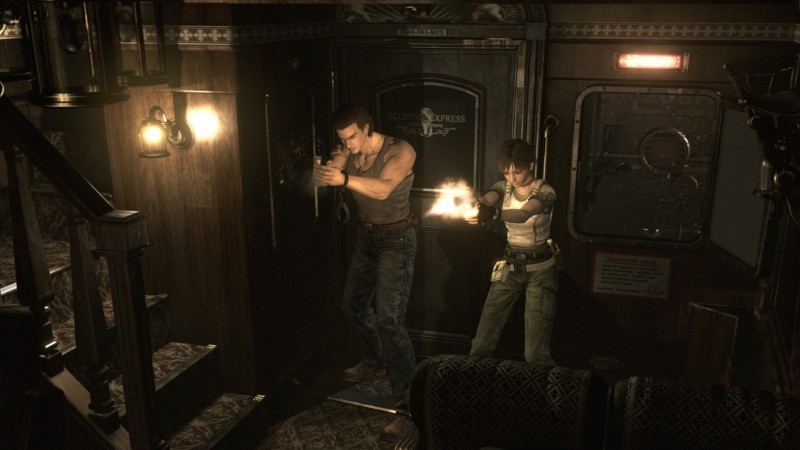
Being the final “classic” Resident Evil to be released before Resident Evil 4 re-invented the franchise, the gameplay is the pinnacle of the original RE formula, expanded upon and tweaked to add new strategy and challenge. It was the first title in the series to introduce “partner zapping”, where you can manually switch between Rebecca and Billy at the press of a button. Each of them have their own strengths and weaknesses too. Billy is stronger than Rebecca and can push heavier objects for puzzle-solving, but Rebecca is the expert medic, and the only one capable of mixing herbs or creating chemicals. Item boxes have been removed, making way for a Sweet Home (the horror game that was the starting point for Shinji Mikami’s original Resident Evil) drop-it-like-it’s-hot inspired mechanic. You can now pick up and drop items where you stand, which makes picking up key items when you have no space easier, but at the cost of having to trek all the way back to that location if you need to recover it. It makes for a more realistic RE experience, as well as more fluid game design.
I’ve always really loved Zero for the risks it took with the RE formula. It didn’t throw everything overboard the way RE4 did, but it was the final little tweak of what had been established up until that time, and I love it for that. The story is also easily the most human of the series, at least in my opinion. Rebecca and Billy grow together over the course of the story, and they both have realistic human reactions to the horror around them. The two of them don’t feel as cookie-cutter as Leon or Chris, and Rebecca is allowed to appear out of her depth in the world around her. That isn’t to say the game isn’t still a terrible, goofy, melodramatic Resident Evil story; it’s still very much that with its singing man in an ornate dress-thing antagonist standing on top of scary hills, enforcing a plot for revenge that ends up seeming more like a child’s tantrum than grand scheme. But despite this, Zero was a great leap forward for character development and human interaction, and there’s a reason Rebecca and Billy have stuck around in the hearts of RE fans for years after.
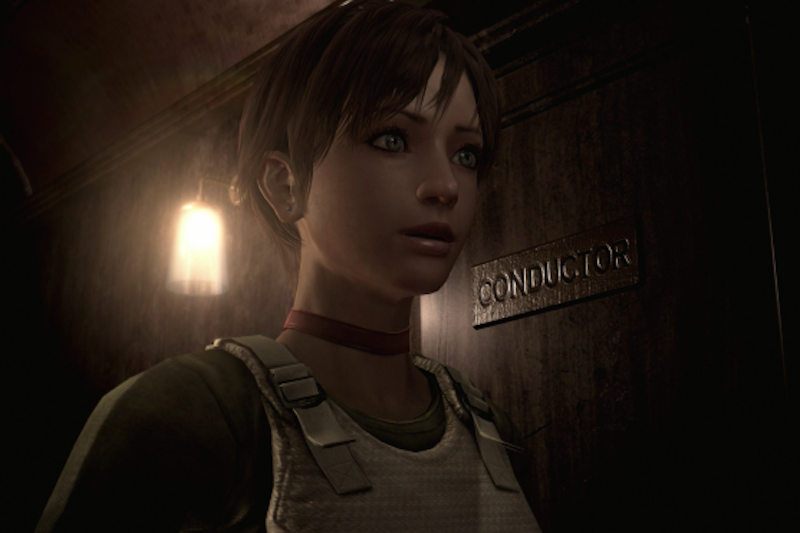
But we both know you aren’t here just to read all about what the game had when it released over fourteen years ago.
More than a fresh coat of paint, more than an up-scaled HD port, Resident Evil Zero has received a complete makeover visually. Every detail, from the character models to the environments to the blood effects have been tweaked, polished, re-done or otherwise pushed to visual perfection. Frankly, I’m stunned by how impressive the game looks. The GameCube sister games, Zero and REmake, both had a level of realism and atmosphere that no other game has had since then, and unlike the 2015 HD REmaster, Zero HD has gone in and actually re-done all of the visuals. Characters have a new depth and detail unlike anything in the original game, Rebecca’s eyes shine brightly in the light and her padded S.T.A.R.S. uniform has a more realistic cloth feel to its look. Zombies are gorier than ever, light glinting off of wet looking soaked-in blood stains on their clothes. The pre-rendered backgrounds come alive with all of the small, detailed animations such as wine bottles rolling gently on the rocking train and leaves rustling in the wind outside the Training Facility have all been upgraded, and it looks amazing.
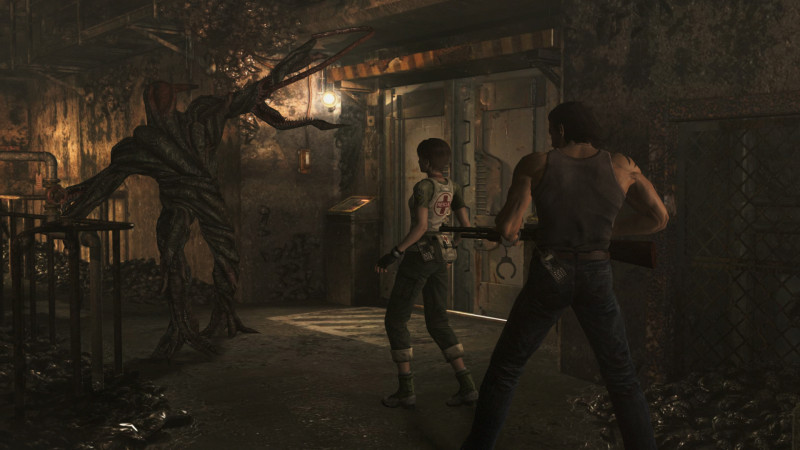
I’m blown away by how clear and new everything looks. It feels much more like “the original vision” than simply up-rezzing the already existing game. I kept finding myself going “Oh, wow, look at that” while playing. Not to say that the new visual upgrade was distracting, far from it in fact, but whenever I got a quiet moment after dispatching a zombie or two, it was just as much fun to look around at all of the new visuals as it was to actually just play the game. One of my favorite things to do in this game is perform a head-stomp kill on a crawling zombie. A classic move from the original RE games, and now it’s more gruesome than ever. The gore comes pumping out like a fountain, and the light that reflects off of the crimson gush is delightfully disgusting.
This level of polish and dedication is also very exciting, as Resident Evil 2 is being remade right now from the ground up similar to REmake. It shows that Capcom has listened, and learned from REmaster‘s release. It whets my appetite for more information regarding the upcoming remake. If they put this same level of detail, refinement, and fine tuning into that, we may be looking at game of the year material, not to mention possibly the best Resident Evil to date. My fingers are crossed, and my hopes are high.
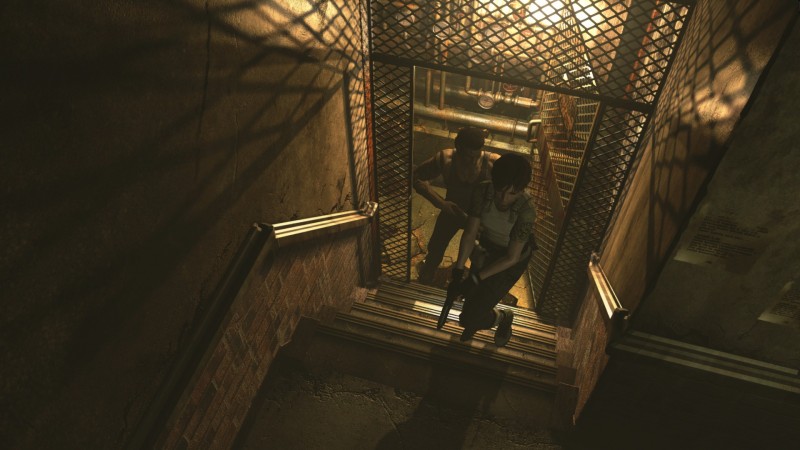
Aside from all of the visual enhancements, Zero HD also has received a number of new features and other improvements. There are multiple new control schemes, both based on the classic “tank” controls the game released with and a new modern control scheme for players who just can’t stand the old stilted ways. I opt for the classic controls myself. Like REmaster before it, you can play in either the original 4:3 aspect ratio or a new 16:9 widescreen presentation, which adds in a “pan and scan” style camera movement when the character reaches the borders of the camera. Personally, I like this effect; it makes the game feel less static and more dynamic, but it’s awesome that they’re options for the purists. Unlike REmaster, which only enhanced gameplay for 16:9 and left all menu interaction 4:3, Zero HD expands the borders of the status screen for the full widescreen view. It doesn’t add much, but it’s great for immersion, a lot more so than suddenly having black bars on either side of the screen. The best addition to this, however, is the way the game handles playing the cutscenes in 16:9. In REmaster, several of the cutscenes suffered from being zoomed in, cutting off valuable information that wasn’t center-frame. Zero HD has a brilliant way of getting around that, by using dramatic lighting to create a vignette effect around the edges of the image to expand the 4:3 image to accommodate the 16:9 aspect ratio without losing the edges of the image. It looks fantastic, and it’s a brilliant workaround for making the cutscenes better, and the action more dramatic.
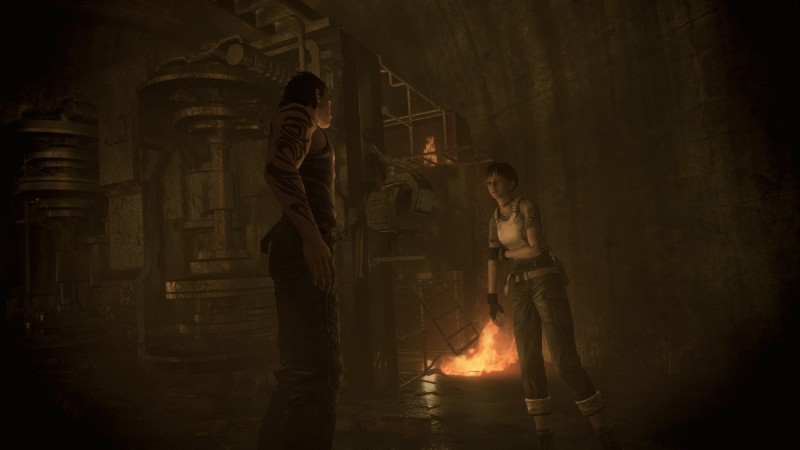
Sadly, the pre-rendered cinematics don’t hold up as well. I feel bad for having to point it out, as there probably wasn’t much Capcom could do without simply re-doing all of them, about 10 minutes or so of pre-rendered animation. I’m assuming that, as the game was originally designed for Gamecube, the cinematics were probably locked at around 480i at best, and it shows. The cinematics look jarringly terrible next to the crisp and clean realism of the in-game cutscenes. Honestly, I thought they looked terrible, even at the time. The characters appear rubbery and out of place in the otherwise hyper-realistic visuals of the game, HD or not, and they’re directed in a much more action-packed, fast-paced manner than that of the in-game cutscenes. So I don’t fault the HD version for these, it would be unfair in my opinion. There wasn’t anything they could do, and it’s just a shame.
Completing the game nets you some bonus modes as well; there’s of course still the Leech Hunter mini-game, which has you race against the clock to collect up to 100 stone Leeches throughout the Umbrella Training Facility. And let’s not forget, there’s the all-new Wesker Mode: After completing the main game, you unlock a special “Wesker” costume for Rebecca, which is a sort of gothic action outfit not unlike Alice Abernathy’s appearance in Resident Evil: Retribution, complete with Wesker’s mind-control P30 device from RE5, and changes her eyes to a bright, glowing red. The costume swap turns Billy into Resident Evil 5‘s version of Albert Wesker, the primary antagonist from the majority of the series. More than just a cosmetic change, Billsker has a few super-powers and D.C. Douglas’ voice for gameplay interactions (He’s still David Webster’s voice for the cutscenes and cinematics). There’s a super-speed running ability, not unlike the one Wesker has in RE5‘s Mercenaries/Versus mode, but also an all-new charging laser-blast… thing, that takes out up to three on-screen enemies at once. It’s ridiculous and awesome. The blast feels not unlike the ‘sexy beam shoot’ from Silent Hill 3 and Book of Memories, functioning more or less the same way (although it’s an area of effect attack, not a laser beam). These abilities make for some extra-curricular speed running fun, and possibly (I haven’t tried yet) help with some of the game’s more outlandishly difficult achievements/trophies (complete the game without ever healing? What!?).
Zero HD also removes the “closet key” for switching costumes that you’ve unlocked after completing the game, and you can instead switch costumes on the fly right from the game’s start. There’s now a new inventory item in the “personal” inventory slot called the Suitcase, which you can use to switch your costume at any time. Rebecca and Billy’s original alternate costumes (Cowgirl/Leather for Rebecca and Jacket for Billy) are unlocked from the word go, along with any of the pre-order costumes you got as well. There are a handful of new costumes that you can purchase separately, including Rebecca’s Director’s Cut costume, the original N64 version of her costume in Zero, and more.
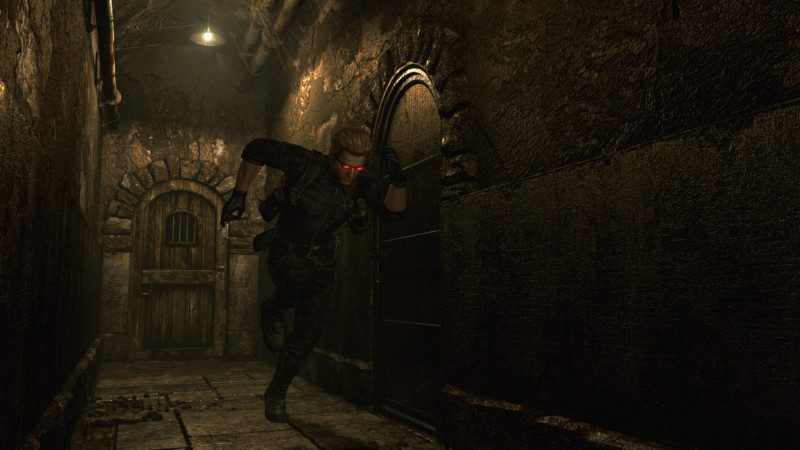
In conclusion, I am blown away by Resident Evil Zero HD, it’s everything I wanted and more from this release. I’ve played a lot of HD remasters of older games, Silent Hill HD Collection, Metal Gear Solid HD Collection, the previous re-releases of REmake, RE4, and Code: Veronica X, but none of them even come close to the perfection that is Resident Evil Zero HD. It never felt like some weak cash-grab, banking on our nostalgia, only cleaning up what was already there and shoving it out the door. It is the truest definition of “realizing the original vision” I’ve ever seen from one of these remasters. Not revisionist history like George Lucas’ Star Wars Special Editions, but more in line with Ridley Scott’s Blade Runner: The Final Cut.
Tweaks, upgrades, polishing, and an excessive (and obsessive) amount of work went into making this game the absolute best way to experience Resident Evil Zero, with a few newly added bonuses on the side to make the $20 price tag more enticing. Trust me, as a consumer, this is one of the most satisfying bang-for-my-buck HD re-releases of a game I’ve ever played, and as a hard-core, Wikia editing Resident Evil nutcase? You pick up the Resident Evil Origins Collection (which includes both this and Resident Evil REmaster for $40) and you will have the single best package of Resident Evil content in nearly a decade. This is not one to miss.
 (10 / 10)
(10 / 10)
 (10 / 10)
(10 / 10)
